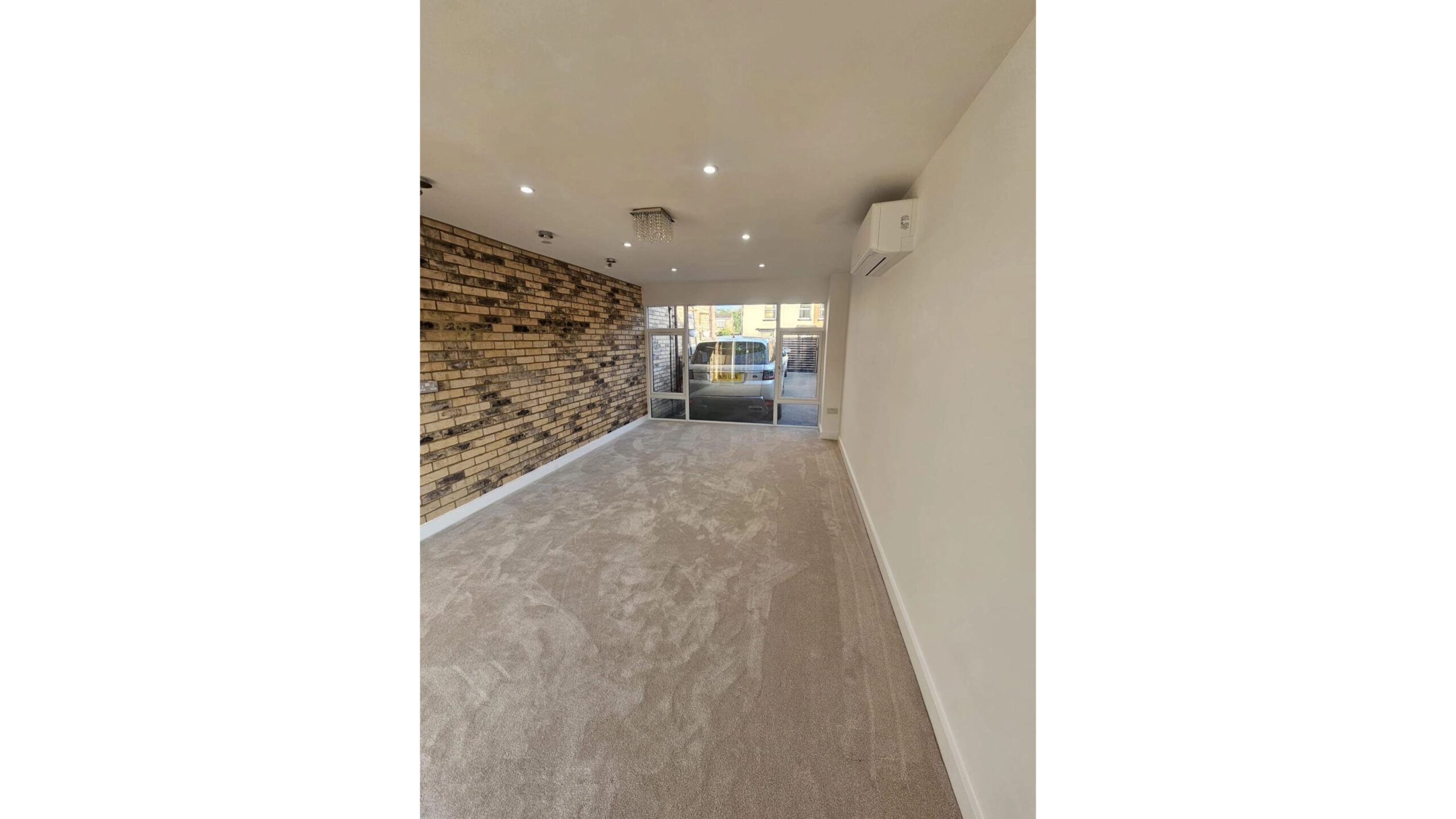Garage conversions have become one of the most popular home improvements in the UK. With property prices high and moving costs prohibitive, homeowners are finding creative ways to add usable space. But in 2025, converting a garage isn’t just about adding square footage—it’s about creating smart, tech-enabled spaces that work seamlessly with modern lifestyles.
For Watford builders T&T Contractors, the enquiries tell a clear story. Homeowners are no longer asking for basic rooms. They want home offices with perfect connectivity, gyms with integrated entertainment systems, and guest suites with automated climate control. The garage conversion market has gone high-tech — and builders need to understand what that means.
Why Garage Conversions Are Going Smart
The pandemic changed how people use their homes. Suddenly, everyone needed home offices, workout spaces, and flexible living areas. Garages offered the perfect solution—existing structures that could be transformed without the complexity of full extensions.
But modern expectations go beyond four walls and a window. Remote workers need bulletproof Wi-Fi and proper lighting control. Home gyms benefit from smart mirrors, music systems, and climate control. Guest rooms should offer the same comfort and convenience as the main house, including voice-controlled lighting and heating.
Property value plays a role too. A well-executed garage conversion can add 10-15% to a home’s value. But a smart garage conversion—one with proper network infrastructure, energy-efficient systems, and modern amenities—commands even higher premiums and appeals to tech-savvy buyers.
The Essential Tech Features
Connectivity That Actually Works
Here’s the biggest challenge with garage conversions: they’re often the furthest point from the home’s Wi-Fi router. Thick walls, distance, and sometimes separate construction mean Wi-Fi signals struggle to reach properly.
Tamas Toth of T&T Contractors now discusses internet needs during every garage conversion consultation. For home offices, this isn’t negotiable—video calls need stable connections. The solution isn’t just hoping Wi-Fi reaches. It means running ethernet cables from the main house or installing dedicated network equipment.
Smart builders plan for wired connections during construction. Running CAT6 cable while walls are open costs a fraction of what it costs to retrofit later. Many conversions now include dedicated Wi-Fi access points or mesh system nodes, ensuring connectivity matches the rest of the house.
Heating and Climate Control
Garages weren’t built with comfort in mind. They’re often cold, poorly insulated, and lack proper heating infrastructure. Modern conversions need to feel like part of the home, which means serious attention to climate control.
Smart thermostats work brilliantly in converted spaces because they can manage the different thermal characteristics without wasting energy heating an empty room. But they need proper integration with the home’s heating system—whether that’s extending existing central heating, installing electric radiators, or adding modern heat pumps.
The enquiries coming into T&T Contractors frequently mention specific systems: underfloor heating with smartphone control, smart radiator valves, or mini split heat pumps with app-based management. These aren’t luxury requests—they’re expected features that make converted garages genuinely usable year-round.
Lighting for Multiple Uses
Garage conversions serve many purposes, and lighting needs vary dramatically. A home office needs bright, adjustable task lighting. A home cinema requires controlled ambiance. A gym benefits from energizing bright light. Guest bedrooms need gentle, warm lighting.
Smart lighting systems solve this perfectly. The same space can have different lighting scenes for different activities, all controlled via voice commands or smartphone apps. But this requires proper planning—smart lighting needs neutral wires at switch locations and adequate electrical circuits.
Homeowners are specifically asking about this technology. They’ve researched Philips Hue, LIFX, or smart switches and want to know if their conversion can accommodate these systems. Builders who answer confidently win the work.
Security and Access
Converting a garage often means creating a new entrance or repurposing the existing garage door. This presents perfect opportunities for smart access control.
Video doorbells at new entrances provide security and convenience. Smart locks eliminate key management for guest suites or rental spaces. Some homeowners want separate heating and lighting control for privacy when hosting guests.
These features require specific infrastructure: power supplies at door locations, network connectivity for video doorbells, and proper electrical setups for smart locks. All straightforward during construction, all expensive to retrofit.
Entertainment and Sound
Home gyms want integrated music. Home offices need video conferencing setups. Guest suites benefit from smart TVs and streaming capability. These aren’t afterthoughts—they’re core requirements that influence electrical planning and network design.
The key is understanding needs upfront. A home gym might need power and connectivity for a large mirror display system. A home office requires multiple outlets positioned for desk setups and charging stations. Getting these details right during construction delivers dramatically better results than forcing solutions later.
What Builders Need to Know
Ask the Right Questions Early
The enquiries T&T Contractors receives show that homeowners have researched what’s possible. They arrive with Pinterest boards and specific product names. The builders who succeed are those who take these requirements seriously from the first conversation.
What will this space be used for? Do you work from home? Want a home gym or cinema? These questions inform everything from insulation choices to electrical layouts. Watford builder Tamas Toth has learned that 20 minutes of technology discussion during initial consultations prevents expensive changes and disappointed clients later.
Plan Infrastructure During Construction
The golden rule of smart garage conversions: install infrastructure while walls are open. Running network cables, positioning electrical outlets strategically, and ensuring adequate circuit capacity costs little during construction but becomes disruptive and expensive afterward.
This means coordinating with electricians who understand smart home requirements. It means thinking about where cameras might go, where Wi-Fi equipment needs mounting, and where future devices might plug in. A bit of foresight during planning saves enormous hassle later.
Future-Proofing Matters
Technology evolves quickly, and garage conversions should last decades. Smart builders install more capacity than currently needed: extra conduit for future cables, additional circuit capacity, and network drops to logical device locations.
This approach costs marginally more upfront but provides immense long-term value. When the client wants to add an EV charger, upgrade their internet, or install new technology, the infrastructure exists to support it.
The Competitive Advantage
Garage conversion is a competitive market. When homeowners interview multiple builders, the one who confidently discusses smart features and demonstrates understanding of modern requirements stands out.
The enquiries coming to T&T Contractors increasingly mention technology needs explicitly. Homeowners want builders who “get it”—who understand that a garage conversion in 2025 needs to be more than a basic room addition.
This doesn’t require builders to become tech experts. It requires listening to client needs, asking informed questions, and coordinating with specialists who can deliver proper infrastructure. The result is conversions that genuinely enhance how people live, not just where they live.
Looking Forward
Garage conversions will continue evolving. AI-powered climate control, health monitoring systems, and even more sophisticated home automation are coming. The conversions planned with robust infrastructure today will adapt readily to whatever technology emerges tomorrow.
For homeowners considering garage conversions, choose builders who take technology seriously. Ask how they handle network infrastructure, what experience they have with smart home integration, and how they future-proof installations. The right builder will ask detailed questions about how you’ll use the space and what technology matters to you.
For builders, the message is clear: smart garage conversions aren’t a niche market anymore. They’re the market. Understanding technology requirements and planning infrastructure properly isn’t optional—it’s essential for delivering what modern homeowners expect and deserve.
Watford builder Tamas Toth is founder of T&T Contractors, specializing in residential construction and conversions that integrate modern technology with quality craftsmanship.

































